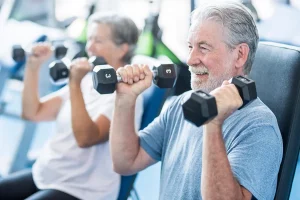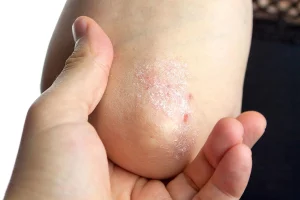 I’ve already argued that bringing the body in line with one’s self-conceived gender identity does not undermine the idea that gender norms are socially constructed as opposed to biologically determined. Here, I’ll look at a second issue raised in Elinor Burkett’s New York Times article, “What Makes a Woman?”: ways of defining what it means to be a woman, and who gets to do the defining.
I’ve already argued that bringing the body in line with one’s self-conceived gender identity does not undermine the idea that gender norms are socially constructed as opposed to biologically determined. Here, I’ll look at a second issue raised in Elinor Burkett’s New York Times article, “What Makes a Woman?”: ways of defining what it means to be a woman, and who gets to do the defining.
Burkett puts forth three interrelated claims:
- recipients of male privilege shouldn’t get to define womanhood;
- womanhood is shaped by experiences of oppression; and
- that some trans women (such as Jenner) presumptuously try to define womanhood by traditional expressions of femininity.
As discussed in Part 1 of this series, Burkett found Jenner’s statement that her brain is more female than male problematic, but Burkett does grant that women and men have different brains, shaped by experiences. She lays out her criticism:
“For me and many women, feminist and otherwise, one of the difficult parts of witnessing and wanting to rally behind the movement for transgender rights is the language that a growing number of trans individuals insist on, the notions of femininity that they’re articulating, and their disregard for the fact that being a woman means having accrued certain experiences, endured certain indignities, and relished certain courtesies in a culture that reacted to you as one.”
For Burkett, a central feature of a woman’s identity is being subjected to oppression as a woman – she gives the examples of having one’s breasts talked to in board meetings, humiliating period experiences, receiving lower wages than male counterparts, concerns about pregnancy, and fear of sexual violence. She doesn’t think trans women should get to define womanhood, because they have not experienced the social or biological constraints that apply to cis women. It also appears that she questions their right to claim themselves as women on that basis.
I’ve encountered a couple common approaches to responding to the issue of trans women’s male privilege. Some note that, once a trans woman transitions (if she does) or if she is perceived as a cis woman, she experiences the same oppression as cis women. Many also note that being trans comes along with its own unspeakable brand of oppression – both before and after transition (if such is pursued), depending on how open the individual is and whether or not the person is perceived as a cis woman.
I found an illuminating third mode of response from trans writer Kat Callahan. She doesn’t see trans oppression as canceling out the reality of male privilege: “It is still privilege, even though it may sound like oppression, because it is one which [is] at an intersection of lacking cisgender privilege. That intersection does not erase the fact that it is still privilege.” Yet she still explains that trans women have more in common with cis women than with cis men even before transitioning (if such is pursued). “The objector would like us to think that no socialisation ever meant for girls and women is ever internalised by trans girls/women. This just isn’t so. …This is a lived experience that cis women and trans women share in childhood and adolescence, and one which does not cease in adulthood.”
Callahan’s words remind us of the important point that trans women were not born men; they were always women. While society may have treated them like boys/men for a time, we can expect that trans girls apply messages about what a girl/woman is to themselves just as cis girls do. Despite outwardly receiving some level of male privilege, the internal self-conception as female/woman can be expected to come along with the same messaging force for trans girls/women.
Burkett’s male privilege argument applies to all trans women, but she’s specifically expressing concern toward those whose gender expression aligns with traditional ideas of femininity. In her choice to rock the provocative “sex babe” look in her Vanity Fair photo shoot, and in her anticipation of wearing nail polish and indulging in gab sessions with the girls, Jenner was, according to Burkett, reducing what it means to be a woman to restrictive and oppressive notions of femininity.
According to trans writer Kat Haché, “There is an underlying assumption… that trans women themselves view being a woman as nothing more than performed rituals of docility and appealing to the male gaze, when in my experience, this is almost never the case.” She explains her own adoption of feminine rituals like makeup and feminine clothing as necessary for being accepted as a woman by society: “Adherence to socially constructed gender norms is mandated by our society for trans people just as much as it is for cis people, and our wellbeing hinges on our ability to ‘do gender’ in a way that satisfies the standards of cis people.”
In Jenner’s case, it’s clear that she looks forward to performing feminine rituals. Maybe to her that is quintessential to being a woman. But that’s a big assumption. Would Jenner and other feminine trans women claim that non-feminine cis women aren’t really women, or are “less” women than they?
Callahan offers further insight here: “Trans women may, and in fact often do, support the gender binary in some ways (although their very existence undermines it), but who else internalises this socialisation and performs it?…[C]is women do.” I agree with Burkett that it’s problematic when someone equates womanhood with femininity. I encounter this from cis women all the time. Burkett states that part of being a woman is “accruing certain experiences;” it seems to me that one of those experiences is receiving and responding to messages about femininity, an experience trans women share in. If some trans women express gender in line with those messages, it doesn’t make them less women, and it doesn’t mean they are reducing womanhood to such performances.
Any trans woman who claims to define womanhood is out of line. The thing is, any cisgender woman who claims to define womanhood is out of line as well. Yes, shared experiences of oppression impact our lives, development, and self-concept. But we’re veering into some dangerous social deterministic territory if we claim that we are defined by our lack of privilege. The experience of being a woman varies by location, upbringing, race, class, sexual orientation, and, yes, gender identity. It may include oppression, cultural messaging, and experiences of our bodies, but none of these is sufficient unto itself, and none can be neatly universalized. Burkett doesn’t get to define womanhood for me, just as Jenner doesn’t get to define it for Burkett, and I don’t get to define it for you. I’m not saying that some general concept of womanhood can’t exist or that nothing binds us; it’s just that such a binder would need to be far more flexible and encompassing than the one Burkett put forth.
We can argue about whether makeup, corsets, and other feminine accoutrements are feminist, but it’s a far leap from that to questioning the womanhood of trans women who express feminine gender, or to assuming that such expressions offer their complete view of what it means to be a woman. To Burkett’s closing words, “Nail polish does not a woman make,” I respond: Nail polish, and a certain extent of male privilege, do not a woman unmake.
















